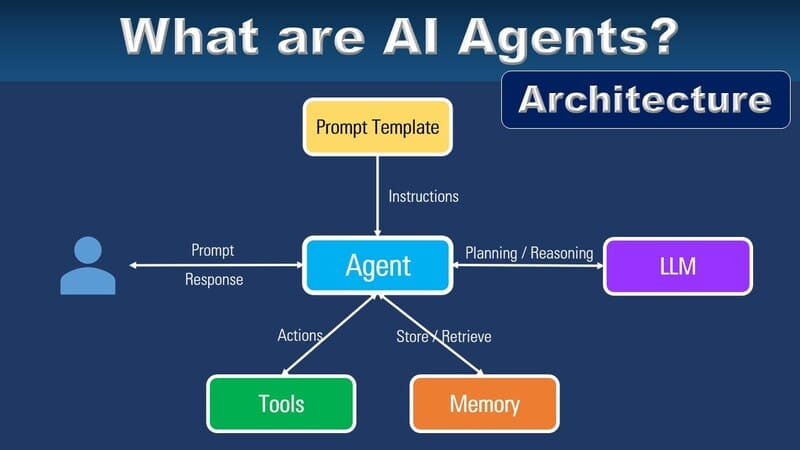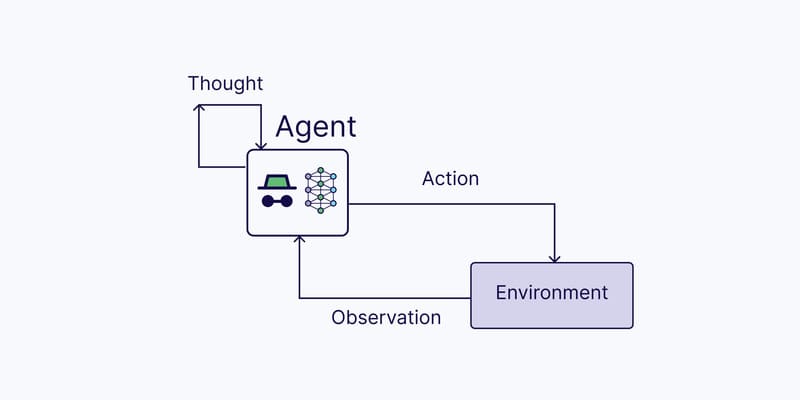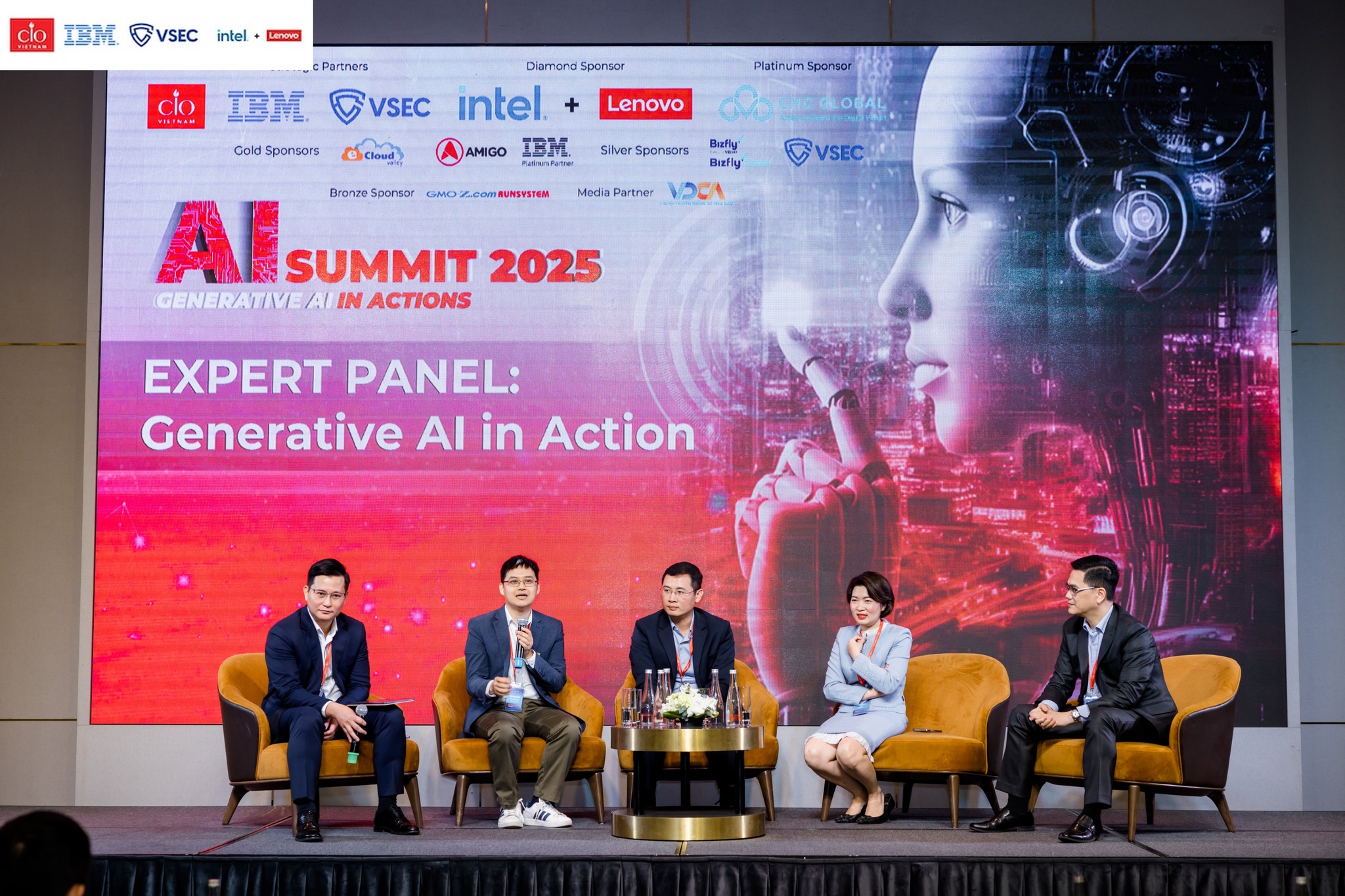In recent years, Artificial Intelligence (AI) in business is more and more invested by enterprises as it is a part of the digital transformation. Most of the big corporations are exploring what AI is and how they can build internal capacity for AI to find new opportunities to create value. It is even more important for companies with large numbers of customers such as banks and insurance as AI will have a direct impact on both their revenues, costs and business strategies, thereby determining the competitive advantage of each enterprise.
AI: Where is the world?
Artificial Intelligence can be simply understood as a method of computation, programming so that machines can simulate intelligent human behaviors, especially the ability to think and reason, to communicate, to learn, ask and adapt. According to Andrew Ng, a professor at Stanford University and Baidu’s director of data science, AI can be likened to a new type of electricity, and is completely capable of changing the entire current industries. In addition, 99% of the added value through AI is realized through the input and output connection method, also known as automatic learning method or control.
The term AI came into being in the 1950s, which was developed in the 1960s and became popular recently, thanks to significant applications in the digitization strategy of developed countries based on IoT, Big Data, and Open Platforms. The OECD Ministerial Meeting in June 2016 in Cancún (Mexico) and in Paris in June 1974 brought the digitization economy into the list of strategic programs of the countries in the block. As a result, digital technology and networked artificial intelligence are leveraging the productivity and efficiency of the economy. The Boston Consulting Group (BCG) estimates that the G20 alone will have a digitized value of $4 trillion in 2016. The 2016 digital economy growth in the OECD is 10%, and that of the outside the area is 15% -20%.
The United States, China, Japan, Britain, and Germany are leading nations in AI research and development. With over 1,000 AI businesses and more than $10 billion of venture in AI, the United States is becoming a superpower in this field both in terms of investment and research. France is lagged behind a pace but has the potential to join the top nations. The artificial intelligence report by French mathematician and congressman Cédric Villani (Fields Medal, 2010) to President Emmanuel Macron underscores the French research capacity, four priority areas (health, transport, defense, and environment), and the risk of brain drain on AI if France does not have a suitable policy (working environment and income).
Obviously, the problem here is how each country and every business takes advantage of the great potentials of AI and machine learning in today’s digitized economy.
The application of AI in business
It is no coincidence that the amount of capital invested in AI has skyrocketed in recent years. According to a KPMG report, in 2017 venture capital funds (VCs) have invested $ 12 billion in AI in the US, up 100% compared to the previous year. In China, the total investment of the VCs will reach $40 billion by 2017, with the goal of becoming the world’s leading artificial intelligence hub by 2030.
In addition, a Stanford University report (AI Index 2017) reported that the number of startup businesses in the United States has increased by 14 times since 2000. Forecasts for revenue from sales of businesses with AI application growth will increase from $ 1.62 billion in 2018 to $ 31.2 billion by 2025.

The rapid development of computer’s computing and storage capabilities; more complete and optimized algorithms; along with increasing data availability and richness, are the three underlying factors for fast-growing AI and many specific applications. In many areas, AI has shown great effectiveness in automating, increasing predictability, thereby reducing costs and increasing revenue for the enterprises.
Businesses in some areas such as e-commerce, banking, insurance, healthcare, logistics or even departments of the business such as marketing, HR, customer service, etc. will be places where AI promote their power. Naturally, the early stages of AI implementation will be more error-prone, but the process of self-learning from errors and continuous updates in the loop will help the AI tool to gradually improve the judgment and decision. At one point, the AI was able to do the exact job, completely replacing humans.
Conditions to apply AI successful
As mentioned above, there are three fundamental factors to achieving AI: i) computing power of computers; ii) algorithms; and iii) source and quality of data. Having modern and powerful computers today is no longer an obstacle for many businesses. The algorithms developed by the experts / scientists are not difficult to obtain when the target problem is set correctly. Open source tendencies and the ability to access information are shared at high speeds, making updating and optimizing algorithms easier.
The biggest and most important obstacle is the data source. For an AI tool to perform well, the general requirement is to have a sufficient amount of data information as (Big Data), either through Machine Learning or Deep Learning, from which AI interacts with the environment and makes decisions. According to experts in computer science and big data, an organization needs at least 100,000 observations.
But the challenge of input data sources is not just quantity but quality. The amount of information generated today can be said to be exponentially increasing, so the amount of information collected and accumulated by organizations and businesses is huge. However, very few data are coded and put into analysis. Also, there are data that are inaccurate or misclassified (wrong information fields). Therefore, for many organizations and businesses, the quality of information is of primary concern in big data applications, machine learning and AI.
However, these three factors are just AI’s hardware. In order to successfully deploy AI, there must also be a management element. For example, deployment and application of AI cannot be a short-term project of 1-3 years but a vision for 5-10 years. The development of AI is also very fast, so the strategy of approaching and adapting the leadership of the organization or business needs to have a foundation and a plan. In addition, business leaders need to identify specific targets for AI adoption, as AI optimizes only with the information and algorithms humans put into it. Finally, it should be noted that AI is the loop of learning, and hence input information of any time is important.
Do Vietnamese enterprises miss the train?
Since joining WTO, the banking-insurance sector in Vietnam has been booming. In terms of number of customers, banks in Vietnam now have about 66.6 million accounts, if the error rate is 10%, there are also 60 million individuals with bank accounts. As for insurance companies, the number of life insurance contracts is up to 13 million contracts, about 13 million motor vehicle insurance policies, 33 million health insurance contracts (including student insurance). ).
As such, now bank-insurers in Vietnam have a huge database of customers and this is a favorable condition to deploy AI.
Although some businesses have seen the importance of AI and AI application in customer service, marketing… but such applications are basic, and not exploited at all strengths of AI. Most businesses have data from many customers, but not much information is categorized, digitized, and included in analysis.
Some applications of AI in Banking-Insurance such as opening account / auto contract, fraud detection such as claims in insurance, customer value calculation, pricing fee, recommend products and services in the direction of individualization … have not been paid enough attention to be deployed.
For banks and insurance companies with large customers, investing in AI implementation soon will increase the competitive advantage by reducing costs and increase sales. This is also a vital condition in the trend of competing with new business models in the financial services sector not only in the country but also in the world.
A long-term medium-term strategy for AI application is needed. Accordingly, enterprises need to reorganize the existing database, collect more information but must follow the relevant legal provisions on privacy. From this, they can organize information, create the best database possible. Next, it is important to define what the purpose of the AI application is for a specific task, so that the algorithm and input data requirements are met. For example, if you want to prevent fraud in insurance claims, there should be a history of compensation, in the form of pictures or characters that AI can identify and compare.
Finally, in order to successfully apply AI, in addition to data, computing, and algorithms, there needs to be both a medium and long-term view of business leaders on AI and digitization economics, as well as management effectiveness in implementation of AI.
Conclusion
Digitalization and knowledge economy on the foundation of the 4.0 industrial revolution are taking place dynamically and are re-structuring the entire global economy: labor into automation, capital into knowledge and data, a comprehensive change of government relations with the people and among factors in the economy through the elimination of intermediaries in the value chain by direct connection technology, changing consumer habits as well as the behavior of the whole society. The waves are spreading very quickly and begin to put pressure on the economy that is still not sustainable like Vietnam. In the latest report of the World Economic Forum (WEF) entitled “Readiness for future production,” Vietnam is classified as a country not yet ready for the industrial revolution 4.0.
The AI game is open to all nations, although the level of development is varied. Vietnam is a country with great potential for technology. Our IT engineers and programmers are high-qualified, no less than developed countries, even more. The numerical advances of Tuffs University (USA) show that Vietnam is in the group of countries with high possibility of breaking through and is in the period of strong development in digitization.
Nguyen Duc Khuong– Financial Professor, IPAG Business School, France
Vo Dinh Tri – IPAG Business School, France
Source: ThoidaiAI

















